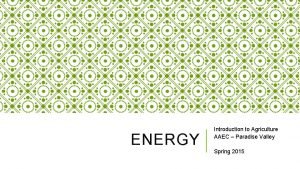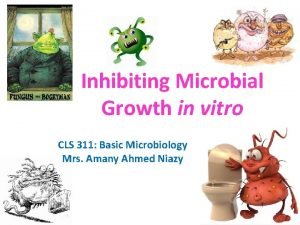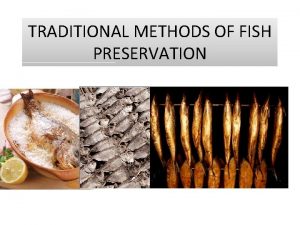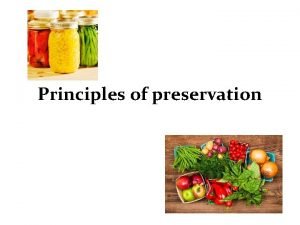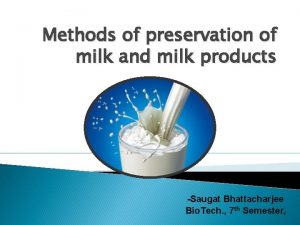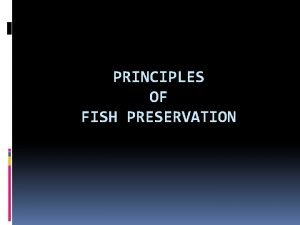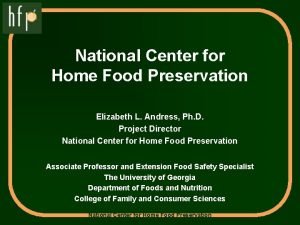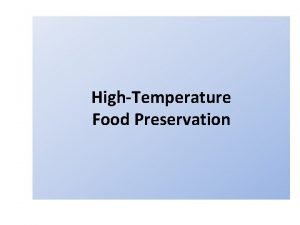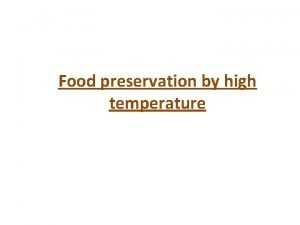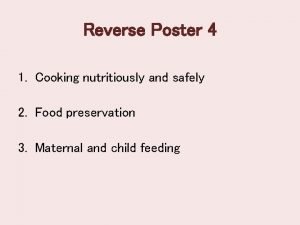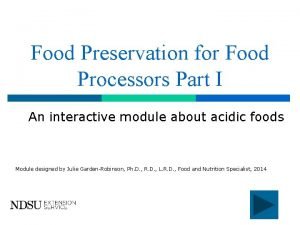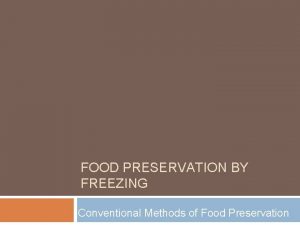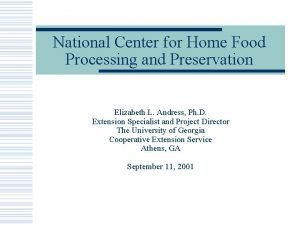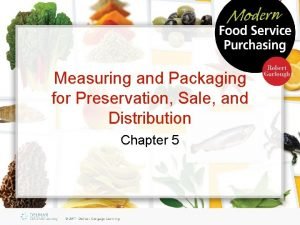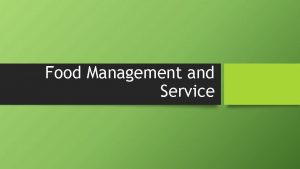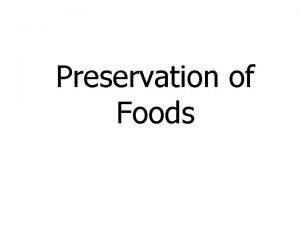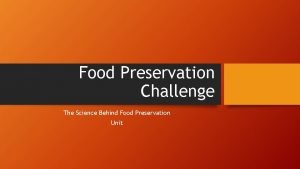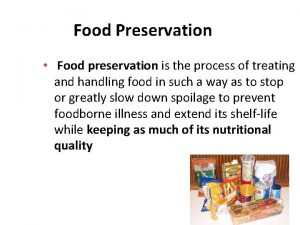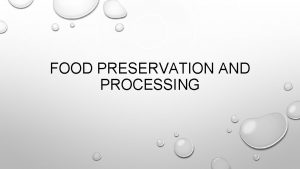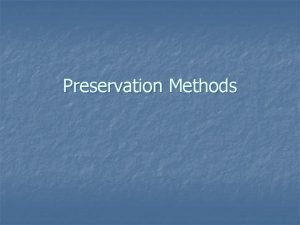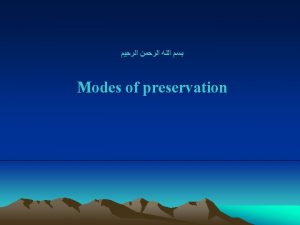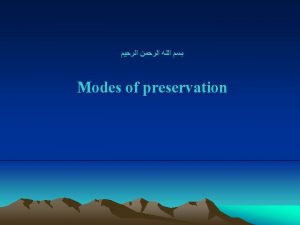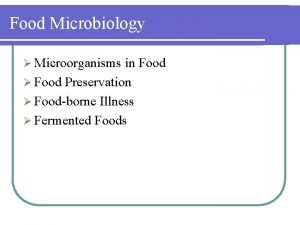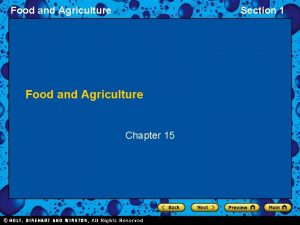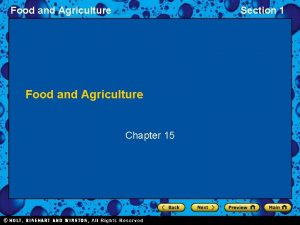Methods of Food Preservation Intro to Agriculture AAEC
















- Slides: 16

Methods of Food Preservation Intro to Agriculture AAEC – Paradise Valley Spring 2015

What is Food Preservation? �Food preservation is used to keep food from spoiling

Effects of Spoilage �Food becomes unsafe to eat �Taste, smell, color, and consistency may change

Causes of Spoilage �Microbes: bacteria and other microorganisms �Botulism, salmonella, e. coli are types of bacterial microbes �Molds (on breads or cheese) are fungi-caused spoilage �Chemicals- i. e. pesticides, spilled fuel �Insects- eat on the food material �Objects- fragments of the packaging material (glass, metal or plastic)

Preventing Spoilage �Must keep food from coming into contact with the causes of spoilage. Involves the following: � Proper storage � Protection from contamination � removal of moisture (to slow microbe growth and spoilage) � Use of temperature extremes (Slow or prevent spoilage) �Heating food destroys most microbes �Near-freezing temperatures slow microbe activity �Below-freezing temps stop microbe growth

Methods of Food Preservation � Methods 1. 2. 3. 4. 5. 6. 7. 8. 9. 10. must retain flavor and identity include: Refrigeration Freezing Canning Pasteurization Irradiation Aseptic Packaging Drying Salting Fermenting Pickling

Refrigeration �Short term method �Spoilage is slowed �Used with fresh fruits, vegetables, dairy products and meats �Most refrigeration is between 36 -40 degrees F

Freezing �Causes the water in foods to freeze �Temperatures should be -30 degrees �Works well with vegetables and meats (proper preparation helps foods to retain natural color and flavor)

Canning �Placing the food into a container, heating to kill any microbes, and then sealing �Canned goods last up to a few years �Used with many vegetables and a few years

Pasteurization �Most widely used with milk and fruit juice �Involves heating the food and holding it at a set temp. long enough to kill any microbes present �Ultrahigh-temperature pasteurization (UHTP) now being used with some milk – allows milk to be stored at room temp. for a few weeks

Irradiation �Use of radiation to kill microbes in the food �Used only on a few foods �Gaining acceptance as a method to prevent spoilage

Aseptic Packaging � Involves sterilizing the food and its packaging � New method of preservation � Often used with meats

Drying � Most likely the oldest method of food preservation � Attempts to remove all traces of moisture so that microbes cannot live � Modern methods include freeze-drying � Food that can be dehydrated include �Meats �Vegetables �Fruits �Milk

Salting � Use large amounts of salt to remove moisture from foods � Disadvantages �High concentration of salt in food leads to health problems �Palatability of salted foods is poor

Fermenting/Pickling � Involves changing the p. H below the level of microbesusually less than 4. 2 -4. 8 � Pickling uses vinegar (acetic acid) to lower the p. H, and salt (to dehydrate the microbes) � Fermentation � Involves the conversion of complex sugars into simple compounds � Uses certain yeasts and beneficial microbes to secrete Enzymes and start the fermented process

Food that are fermented or pickled include : � wines (F) � bread (F) � cheese (F) � Sauerkraut (F) � Pickles (p)
 Aaec paradise valley
Aaec paradise valley Aaec paradise valley
Aaec paradise valley Physical methods of food preservation
Physical methods of food preservation Methods of fish preservation
Methods of fish preservation Principle of pasteurization
Principle of pasteurization Milk preservation methods
Milk preservation methods Different methods of fish preservation
Different methods of fish preservation National center for home food preservation
National center for home food preservation Food preservation by high temperature
Food preservation by high temperature Food preservation using high temperature
Food preservation using high temperature Mochahlama
Mochahlama Microwave food preservation
Microwave food preservation Food preservation definition
Food preservation definition Methods of freezing food
Methods of freezing food Burial food preservation
Burial food preservation National center for home preservation
National center for home preservation Advantages of food preservatives
Advantages of food preservatives

